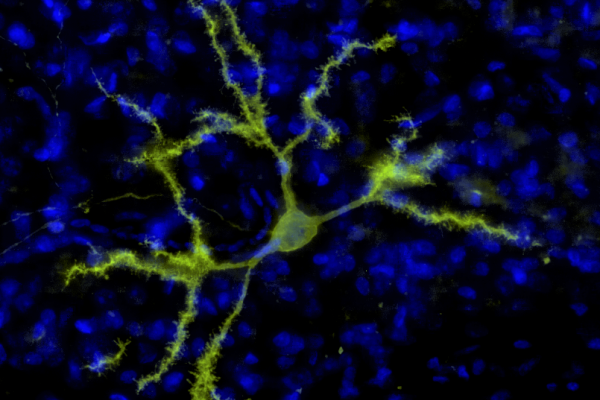2021-01-22

Birds are excellent models to study learning, complex cognition, song and vision. However, to understand how these behaviors are realized within the brain, methods that are able to control cellular activity on a millisecond timescale are essential. This can be achieved with optogenetics, where neurons become light-sensitive through the integration of artificial ion channels and can later be controlled with focused optical stimulation. However, this method relies on the use of viral vectors that have so far never been used in the pigeon brain. Therefore, in our study, we compared the efficiency of three adeno-associated viral vectors and found that AAV1 was the most efficient construct in delivering ChR2 into the primary visual area and various other brain regions of pigeons. We could also verify the light responsiveness of ChR2 expressing cells with electrophysiological recordings and immediate early gene expression. Most importantly, we provided the first proof of principle for optogenetics in behaving pigeons as optical stimulation of the primary visual area decreased pigeons’ grayscale visual discrimination accuracy. With our study we provide a viral strategy that can be used for the functional analysis of brain circuits in pigeons and offers novel opportunities for comparative research.

Birds are excellent models to study learning, complex cognition, song and vision. However, to understand how these behaviors are realized within the brain, methods that are able to control cellular activity on a millisecond timescale are essential. This can be achieved with optogenetics, where neurons become light-sensitive through the integration of artificial ion channels and can later be controlled with focused optical stimulation. However, this method relies on the use of viral vectors that have so far never been used in the pigeon brain. Therefore, in our study, we compared the efficiency of three adeno-associated viral vectors and found that AAV1 was the most efficient construct in delivering ChR2 into the primary visual area and various other brain regions of pigeons. We could also verify the light responsiveness of ChR2 expressing cells with electrophysiological recordings and immediate early gene expression. Most importantly, we provided the first proof of principle for optogenetics in behaving pigeons as optical stimulation of the primary visual area decreased pigeons’ grayscale visual discrimination accuracy. With our study we provide a viral strategy that can be used for the functional analysis of brain circuits in pigeons and offers novel opportunities for comparative research.